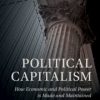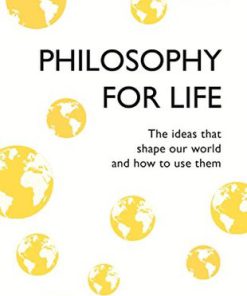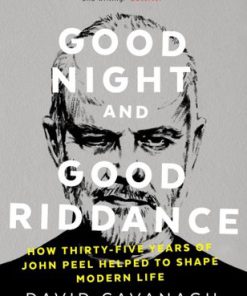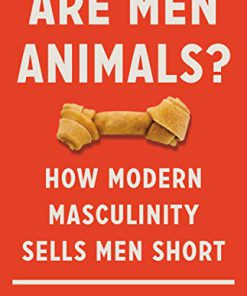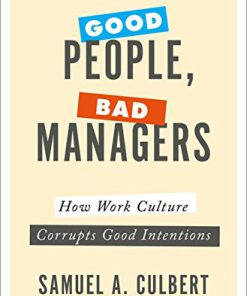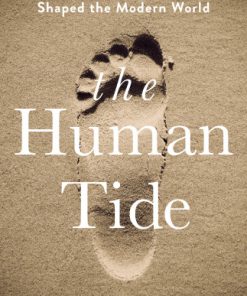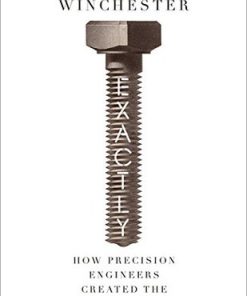The Good the Bad and the Just How Modern Men Shape Their World 1st edition by Riel Vermunt 1317029977 9781317029977
$50.00 Original price was: $50.00.$25.00Current price is: $25.00.
The Good the Bad and the Just How Modern Men Shape Their World 1st edition by Riel Vermunt – Ebook PDF Instant Download/DeliveryISBN: 1317029977, 9781317029977
Full download The Good the Bad and the Just How Modern Men Shape Their World 1st edition after payment.
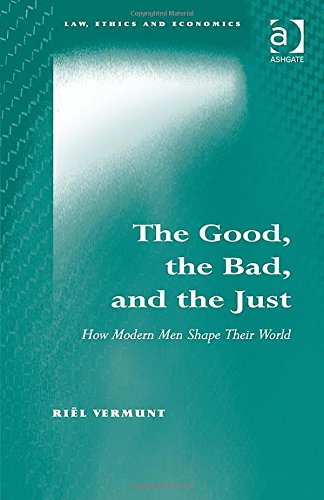
Product details:
ISBN-10 : 1317029977
ISBN-13 : 9781317029977
Author: Riel Vermunt
Drawing on multidisciplinary findings and ideas, this book discusses fair allocation of social resources, such as goods, services and information, in a novel and integrated way. The role of the essential features of allocation behavior: motivation, cognition and emotion, as well as morality and reactions to perceived unfairness are examined in the newly developed Justice Model. The author offers explanations as to why, how and to what extent, people, in an effort to attain justice, allocate social resources between self and others and among others. It is held that the allocation event, featuring actor, recipient and observer, as well as the resources to be allocated by an actor, can function as a guideline for the essentials of fair behavior. The work explores the conditions under which an actor may deviate from a just division of social resources thus instigating a reaction from recipients and observers. The study covers various levels of analysis ranging from the intra-personal to the societal. The book will be of interest to academics and researchers working in the areas of crime, law, justice, public policy and governance.
The Good the Bad and the Just How Modern Men Shape Their World 1st table of contents:
Part I The Justice Motive
Chapter 1 Origins of the justice motive: Between egoism and altruism
Chapter 2 Climate change, social change, and the justice motive
Part II Morality and Justice
Chapter 3 Resource allocation, justice, and morality
Chapter 4 Resource allocation and justice in society
Part III Justice-Related Mental States
Chapter 5 The psychology of just resource allocation
Chapter 6 The psychology of just resource allocation
Part IV: Reactions to Unfair Decisions
Chapter 7 Reactions to unfair allocation behavior
Chapter 8 Reactions to unfair allocation behavior
Epilogue
References
Part I The Justice Motive
1 Origins of the Justice Motive: Between Egoism and Altruism
Introduction
Primate Food-sharing
Getting Meat and Fruit
Food-sharing Motives
Explanations for Non-kin Food Sharing
Environmental Conditions and Food Sharing
From Hominin to Homo
Food Sharing in a Drastically Changing Natural Environment
Intellectual developments
Emotional developments
Social developments
Sharing Food in Hunter-Gatherer Groups
Studies Based on Game Theory
The Social Component of Food Sharing
Food Sharing as an Allocation Event
The Donor as Authority
The Motives of the Donor
Food Sharing as Resource Exchange
Concluding Remarks
References
2 Climate Change, Social Change, and the Justice Motive
Introduction
Social Figuration
The Nobility–Bourgeois Figuration
Social Figuration Revised
From Hunter-Gatherer to Farmer: A Social Figuration Approach
Hierarchy in Hunter-Gatherer Groups
Culture and the Allocation Process in Hunter-Gatherer Groups
After the Ice Age
Reactions to Climate Change and Social Factors
Cultural Changes
Impact on Justice
Impact on Cognition and Emotion
The Little Ice Age and its Consequences
The Industrial Revolution
Societal Changes
People’s Responses to Societal Changes
Implications for Cognitive Development
Implications for Justice
Conclusions
References
II Morality and Justice
3 Resource Allocation, Justice, and Morality
Introduction
Importance of Allocation Events
Simple and Complex Allocation Events
Types of Allocation Events
Allocation behavior
Number of resources
Allocation type
The Actor
The Actor’s Fear
The Actor’s Definition of the Event
The Actor’s Justifications
Justification and excuse
Justification and inequality
Justice and Morality
Some Examples
Drug Shortage (Scanlon, 2008: 14–15)
Transplant
Drug/Transplant
Other Examples
Commission and Omission
Resources
Love and Respect
Love
Respect
Love and respect
Love, respect, and justice
The Allocation Event and Morality
Resource Type and Moral Behavior
Elements of Moral Behavior
Modes of Moral Behavior
Latitude of Moral Behavior
Strength of Moral Behavior
Concluding Remarks
References
4 Resource Allocation and Justice in Society
Introduction
The Original Position and its Consequences
The Waiting Room: How it Begins
Primary Goods and Civil Liberties
The Waiting Room: How it Ends
Before the Door Opens
After the Door Opens
Waiting Room Solutions
The Waiting Room Revisited
The Community of Equals
Aristotle seeking eudemonia
The ruling class, according to Plato
The Waiting Room as Battlefield
Hobbes’ ruler
The People in the Waiting Room as Enemies
The ruler according to Machiavelli
People Making Room
Hume’s moral philosopher
Summary
The Economics of Benevolence in the Waiting Room
Equality in Groups
Conclusions
Allocation of Resources
Ruler’s Behavior
Discussion
References
Part III Justice-Related Mental States
5 The Psychology of Just Resource Allocation. Part I: Emotions and Cognitions
Introduction
The Psychology of Allocation Behavior
The Model
Psychological Model of Resource Allocation Behavior
Modulation of the Drive
Motivation in the Social Context
Motivation and Emotion
Gains, losses and fairness
The Struggle for Fair Allocation: A Neuropsychological View
A Short Anatomy of the Prefrontal Cortex (PFC)
Cognitive and Emotional Conflicts
Egoistic versus just motivation
Altruistic versus just motivation
Egoistic versus altruistic motivation
Motivational conflict and emotion
Stress
Justifications
Justification content
Justification and emotion
Attempts to Convince Others: Persuasive Communication
Detection of the Operation of the Justice Motive
The Negative Self-preservation and Moral Emotions
Fear (a negative self-preservation emotion)
Anger (a negative self-preservation emotion)
Shame or guilt (a negative moral emotion)
Sadness (a negative self-preservation emotion)
The Positive Self-preservation and Moral Emotions
Pride (a positive moral emotion)
Happiness (a self-preservation positive emotion)
Contentment (a self-preservation positive emotion)
The Reality of Economic Dilemmas
Conclusions
References
6 The Psychology of Just Resource Allocation. Part II: Relationships
Introduction
Normal and Abrupt Transitions in Allocation Behavior
Intra-Group and Inter-Group Relations in Allocation Behavior
Immaterial Resource Allocation
Allocation as Catastrophe
Identity Threat
The Brain Train
Allocation Justice and Threat: Some Conclusions
Actor–Recipient Allocation
Recipient–Recipient Allocation
The Abruptness of the Threat Reaction
References
Part IV Reactions to Unfair Decisions
7 Reactions to Unfair Allocation Behavior. Part I: Role of Recipient and Observer
Introduction
Recipients’ Reactions
Perceived Discrepancy between Actual and Expected Outcome
Distributive justice
Procedural justice
Retributive justice
Resource theory
Rules and Resource Class
Physiological, Psychological, and Behavioral Reactions to Perceived Discrepancy
Neuro-physiological components of discrepancy
Physiological reactions to perceived discrepancy
Psychological reactions to perceived discrepancy
The Nature of Behavioral Responses to Discrepancy
Allocated outcome
Procedural rules
Resource type
Person of the actor
Recipient–actor relationship
The strength of the behavioral reaction to discrepancy
Injustice and Frustration
Allocation Event as a “Gestalt”
Integration of Justice Theories and Resource Theory
People also search for The Good the Bad and the Just How Modern Men Shape Their World 1st:
the good the bad and the ugly cast
the good the bad and the ugly song
the good the bad and the ugly streaming
the good the bad and the ugly theme lyrics
angel eyes the good the bad and the ugly
Tags: The Good, the Bad, the Just, World, Riel Vermunt
You may also like…
Politics & Philosophy - General & Miscellaneous Philosophy
History - World History
The Craft: How the Freemasons Made the Modern World John Dickie
Biography & Autobiography - Film
Relationships & Lifestyle - Men's Health & Lifestyle
Business & Economics - Responsibility and Business Ethics
Good people, bad managers : how work culture corrupts good intentions 1st Edition Samuel A. Culbert
History - World History
The human tide how population shaped the modern world First Us Edition Morland
Fantasy - Urban Fantasy
The Good the Bad and the Undead 1st Edition by Kim Harrison 9780061744518 0061744514
Business & Economics - Investing



